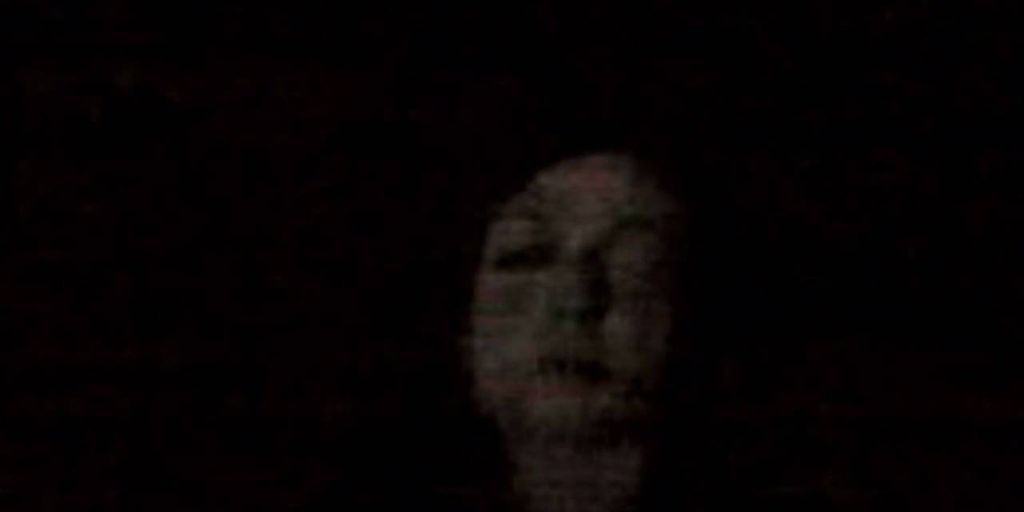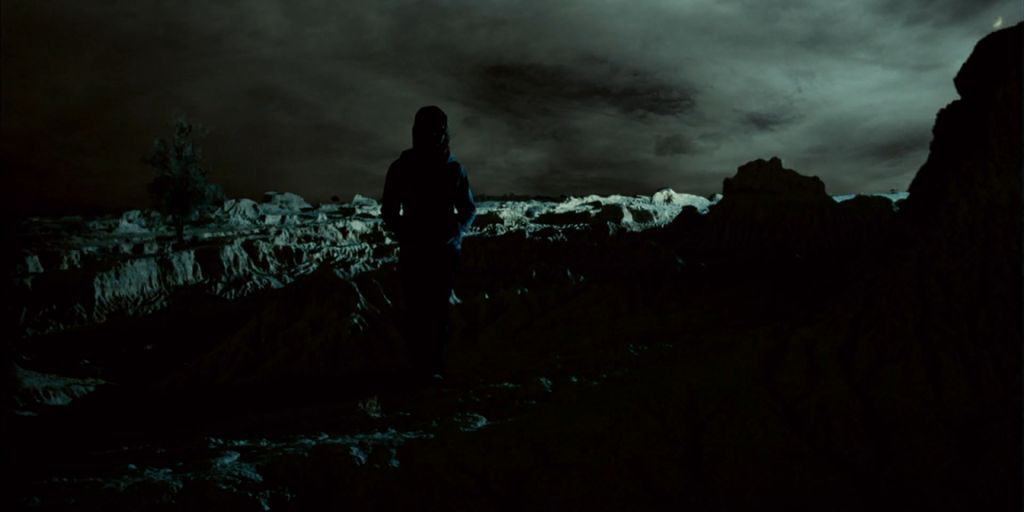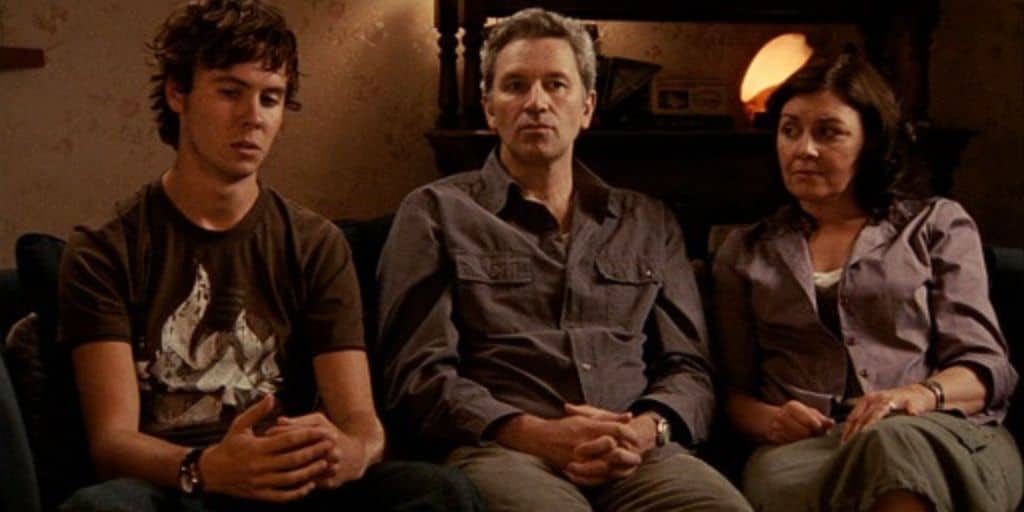Lake Mungo, an Australian cult horror film, is a horrifyingly effective mockumentary. It left viewers with many unanswered issues regarding its concluding themes.
Lake Mungo, a low-budget thriller that debuted in 2008, has gained cult status in the years since because of its terrifying horrors. Lake Mungo demonstrates that national filmmakers don’t require a great budget to produce an outsized impact on audiences, much like the then-recent hit Wolf Creek did.
The conclusion of Lake Mungo demonstrated how, when done properly, the mockumentary genre can be genuinely horrifying. Lake Mungo, one of the best horror films about mourning, detailed the tragic story of Alice Palmer, a 16-year-old who drowns to death.
In the aftermath of Alice’s passing, a documentary crew is interviewing her family when the film opens. The family is troubled by her presence because Alice’s ghost appears in a video taken throughout their home.
Although Lake Mungo’s first act moves at a contemplative pace, anchoring viewers in the sorrow Alice’s family is experiencing and establishing their personalities, the twists quickly appear. They come thick and fast as the narrative shifts into the realm of a psychological thriller before swinging back to supernatural horror for its unsettling, puzzling conclusion.
Also Read: The Best Offer Ending Explained: Who Was Virgil Waiting For At The End?
Lake Mungo Ending Explained
The Lake Mungo conclusion revealed that Matthew admitted he staged the footage of Alice’s ghost to get his sister’s body unearthed and give his mother some closure when the family hires medium Ray Kemeny and the psychic is unable to explain the apparent haunting.
Then, when Brett, the family’s next-door neighbor, is seen by Alice’s mother kneeling in one of the tapes, it leads to the discovery of a film that shows a sexual encounter between Alice, Brett, and his wife.
At this time, Lake Mungo gave a detailed account of what had occurred to Alice and the real circumstances surrounding her terrible death. The family soon discovers a video showing Alice burying something at the named lake due to Alice’s lover after seeing the condemning movie, which naturally shifts suspicion on the neighbors, who flee in shame.
The startling twist finale of the film reveals the real, very different tale behind her untimely demise. They dig it up, revealing her items and phone. As Lake Mungo described, the family discovers a distressing film of Alice wandering the Lake Mungo beach, where she encounters a spectral figure.
The pale, bloated figure seen in the video is Alice’s corpse, which was earlier discovered in Lake Mungo by her father. Although the mystery of how Alice discovered her own body is never fully explained, the horrifying revelation of the tape shows that she was aware she would drown for a while before she died.
One of the rare horror films from the 2000s that received acclaim from critics poses the horrifying query of what a spectator would do if afflicted with knowledge of their demise. According to the Lake Mungo ending, Alice buried her phone at the lake that bears her name for two reasons.
Either she wanted to conceal the fact that she had seen her own body before dying to escape the reality of her impending death, or she wanted to save some proof of what had happened for when she eventually passed away.

Also Read: Jaane Jaan Movie Ending Explained: How Does Naren Frame Himself For Ajit’s Murder?
The neighbor subplot serves as a subtle reminder to viewers that, while witnessing Alice’s family’s sadness, they don’t know much about her. The movie leaves this up for interpretation.
Lake Mungo clarified that because Alice is gone for a significant portion of the narrative, viewers cannot be certain of her intentions. Everything that viewers learn about Alice is gleaned from the recollections and descriptions of her family and friends, creating a sympathetic but unfinished portrait.
The viewer was only ever intended to know Alice as a ghost, but this was done on purpose, making Lake Mungo conceivably one of the saddest horror films. In this horror, Alice Palmer only appears as a Cypher and a ghost (both literally and figuratively), with her family projecting memories onto her.
Her personality is never shown in the film. Speaking of movies, Lake Mungo’s main thematic concern is the unreliability of video. David Lynch’s oeuvre is full of pictures of reflection, abrupt editing, and campy overacting to continuously remind viewers they are seeing a movie; thus, there are echoes of him in this aspect of the movie as well.
The actors gave lifelike performances, and the mockumentary aesthetic was generally identical to actual documentary filmmaking, according to Lake Mungo, who revealed a completely different strategy. According to Lake Mungo, viewers can never really trust the images that the characters themselves capture.
Because Alice’s mother was not present when her daughter died, she is reluctant to accept the truth of her daughter’s passing. Instead of dealing with this hallucination, her son decides to ironically further support it by filming fictitious proof of Alice’s continuous presence.
This prompts the documentary makers to discover what appears to be “real” proof that Alice foresaw her demise, but in one of the horror films that invented the found-clip cliche, the truth of the footage cannot be determined because Alice has already passed away when it is discovered.
The phony tape reveals “real” footage of Alice encountering her ghost, as the Lake Mungo epilogue indicated, but viewers can’t be sure this is real and not staged and are once again reminded that Lake Mungo isn’t a documentary despite its truthfulness.
The bleak finale, which shows Alice’s ghost still lurking in the Palmer house window as the family moves on before a credits montage illustrates evidence of her ghostly presence in earlier footage that went unnoticed at the time, epitomizes how the audience can never be sure what is real and what isn’t in the film.

By the end of the film, all that is left of Alice is a video clip that might have been altered or doctored, but the audience is also reminded that this is the only instance in which they have seen her family.
The documentary crew chose to portray them in this way because film is a medium that naturally distorts and reshapes reality. With Alice, Lake Mungo created one of the deadliest horror movie ghosts and provided a profoundly unnerving reminder that even though people are continually capturing themselves on camera, they can never fully see themselves onscreen unmediated.
The Lake Mungo finale did not explain, yet it had a purpose, which contributed to the film’s eerie atmosphere. As viewers are guided through the grief of Alice’s closest circle, heightened by the mystery surrounding her death and the final devastating revelation, Lake Mungo ultimately becomes an exercise in dread.
In an interview with After Dark Films, writer/director Joel Anderson acknowledged utilizing the plot of Lake Mungo to exploit viewers’ most primal anxieties, with the passing of a loved one being among the most visceral.
As Anderson puts it, Everyone’s greatest fear, in my opinion, is the thought of someone close to them or in their family passing away tragically. It’s an extremely real, very human fear. A horrific accident, you know, just doesn’t make sense.
There are many concerns raised as a result, including if there is a pattern or rationale to how things operate. Or is it just absurd? So, in my opinion, you must deal with some very significant problems. Additionally, you don’t do it logically.

The overarching subject that chills audiences to the bone is the bigger questions surrounding death as a whole, why it strikes, and when, especially when it comes to unexpected circumstances.
Lake Mungo described the visceral emotions of mourning. The Lake Mungo finale revealed Alice’s awful fate but provided few details about how much Alice knew about her impending death.
In addition to being devastated by Alice’s passing, Alice’s own family is also devastated by the revelation that they didn’t know their daughter. As a result, as they struggle with the “whys” that followed her departure, they are also doubting how well they know their loved one.
Also Read: Dragon Ball GT Ending Explained: Why Did Goku Leave With Shenron?





